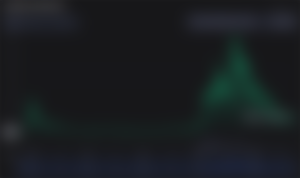
Dear reader,
As Ethereum raises the stakes and merges into its new identity, the hype surrounding ETH killers may appear to have calmed down somewhat. This successful transition to proof-of-stake doesn’t rule out the competition altogether. One such competitor to the throne is Cardano, a popular crypto project that is intrinsically linked to Ethereum’s history but also very different in many ways.
I might catch some heat for this one but screw it, I came to crypto to learn and earn, not join cults. The following deep dive is a non-biased review of Cardano’s background, its ecosystem and the pros and cons of its technology.
The Early Days of Ethereum
To understand Cardano is to understand Ethereum. Or at least know who some of the co-founders were. Besides Vitalik Buterin, seven other people can lay claim to having contributed to the bumpy start of crypto’s largest smart contract platform. Charles Hoskinson was one. Don’t believe me? Take a look this 2014 promotional video where Charles and Vitalik wax lyrical on Ethereum’s vision for a decentralised future.
Due to numerous differences in opinion, the most notable being Ethereum’s status as a for-profit or non-profit organisation, Charles was booted out of the project on what came to be known as Ethereum’s Game of Thrones day in June 2014. Charles proceeded to donate his 293,000 Ether to his secretary after this event and looked for another stomping ground to call home.

For those of you wishing to learn more about Ethereum’s early days, I highly recommend giving Laura Shin’s “The Cryptopians” a read.
Cardano’s Foundation
Hoskinson got down to work and helped set up 3 entities in 2015 that would collectively create the backbone of Cardano:
Cardano Foundation, a Swiss non-profit organisation, tasked with the regulatory oversight of the Cardano ecosystem.
Emurgo, the commercial arm of Cardano, tasked with providing solutions for developers, startups, enterprises and governments.
Input Output Hong Kong (IOHK), a blockchain engineering company, tasked with the technical development of Cardano’s blockchain. IOHK later rebranded to IOG (Input Output Global).
Named after Gerolamo Cardano, a 16th century Italian mathematician, the Cardano mainnet went live in 2017 and is supported by its $ADA cryptocurrency. $ADA is named after Ada Lovelace, a 19th century English mathematician and daughter to famous poet Lord Byron. Similar to Satoshi sub-units within Bitcoin, a single Lovelace represents the smallest sub-unit for Cardano’s coin (0.000001 $ADA). Put 2 and 2 together and you’ll soon begin to see a mathematics theme running through Cardano’s lore.
A Roadmap of Eras
Since launching its mainnet in September 2017, Cardano has been pursuing its roadmap which is divided into five distinct eras, each one dedicated to a specific set of functionalities.

Byron (foundation)
Shelley (decentralisation)
Goguen (smart contracts)
Basho (scaling)
Voltaire (governance)
The functionalities are delivered periodically across numerous code releases, or hard forks. The work involved actually occurs in parallel and having already founded, decentralised and smartened up their contracts, Cardano developers currently find themselves preoccupied with aspects of scaling and governance. The recently implemented Vasil hard fork brings improvements to smart contracts and provides more scalability and interoperability with other blockchains.
Cardano’s Tech Stack, an Overview
Cardano gets plenty of stick for its slow delivery, especially in comparison to other layer 1 blockchains. Two possible explanations for this pace of development are the choice of a more complex programming language and Cardano’s rigorous procedure of academic research and peer review. Despite the criticisms, there are indeed some interesting features to be noted in Cardano’s tech stack.
Functional Programming
Cardano’s founders chose to build the blockchain from scratch using Haskell, a functional programming language. Diving into the specifics of functional programming is beyond the scope of this crypto deep dive, but suffice it to say that a functional programming language offers more certainty towards the correctness of the code. This is in part due to the fact that the language is more oriented towards mathematics and is considered “purer” than other forms of programming languages (which can have their outputs skewed by elements such as time, disk space and internal state).
Haskell is used in many mission critical industries such as banking and aerospace and forms the basis for two other languages within the Cardano ecosystem:
Plutus — the scripting smart contract language
Marlowe — a simplified “building-block” language dedicated to financial applications
Basing their smart contracts on Haskell gives developers access to a rich library of resources, enables mathematically verifiable security and allows for more reliable outcomes in smart contract applications.
The clear disadvantage to this choice is that blockchain developers wishing to support Cardano need to learn a new coding language. With the majority of decentralised applications operating on Ethereum’s Solidity code, this places Cardano’s dApp ecosystem several steps behind the pace.
More insight into Cardano’s choice of Haskell is offered in this Cardano Foundation Medium article.
Dual Layer Architecture
Cardano is supported by two network layers:
Cardano Settlement Layer (CSL), which keeps track of addresses and tokens; basically a payment layer.
Cardano Computation Layer (CCL), which executes the logic and smart contracts.
The division of basic settlements from more complicated computation is actually quite efficient and can allow for software updates to be pushed through without interrupting network activity. This precise mechanism is known as Cardano’s Hard Fork Combinator (HFC).
Extended UTXOs
The phrase “smart contracts” might make you think of Ethereum and its account based model. It may come as a surprise to you then that Charles Hoskinson, Ethereum co-founder, opted for Bitcoin’s UTXO model to form the basis for his smart contract platform. Bitcoin, with its clunky UTXO model, is not usually top of mind when one thinks of smart contracts. Cardano further develops this tech by adding a fancy “e” in front. The “e” actually stands for extended and signifies additional scripts within the transaction outputs.
Those of you scratching your heads wondering what all this gibberish means, fear not as I wrote a short post recently explaining the difference between Bitcoin’s UTXO and Ethereum’s account based models.
The eUTXO model stores additional Plutus scripts within the transaction data; these scripts see if transactions are allowed to spend specific outputs. It’s like having a nightclub bouncer in your wallet that tells you which coins and banknotes are allowed to come out and be spent. This feature is in addition to the standard UTXO functions you already know from Bitcoin, for example.
As both metadata and scripts are combined in transactions, throughput efficiency can be increased. Transaction verification becomes simpler, allowing fees to be predictable. As long as the value held in the sender’s UTXOs are enough to cover the transaction, it can go through without incurring astronomical gas fees linked to sudden network activity, as seen on other popular layer 1 smart contract blockchains. A nice extra touch is that failed transactions do not incur additional gas fees.
Nodes can also execute transactions in parallel, unlike in account based models. Instead of having to refer to an account’s balance after a transaction, the nodes simply see if the input UTXOs are already in use or not.
For those of you wishing to dive even deeper into the nuances of eUTXO, I recommend this useful handbook put together by the team at Essential Cardano.
Highly Decentralised Staking
A very important factor in Cardano, and one which the community is incredibly proud of, is its level of decentralisation. The amount of the circulating $ADA supply currently being staked is over 70% and is spread out over 3200 staking pools. Stake pool operators play an important role in the Cardano ecosystem. 73% of these 3200 pools are operated by single pool operators (“SOLO” in the chart below).

All told, the solo operators hold almost a quarter of the entire staked supply at 22%, with Binance taking second place at 11% (via multiple pools of course).

The efficiency of Cardano’s high level of decentralisation can be attributed to its “K” parameter. This mechanism decreases rewards when a stake pool reaches a pre-defined saturation level, which incentivises users to move their funds elsewhere and pool operators to open additional pools.
TIP: If you’re a long term $ADA holder and your coins are held on a centralised exchange, the best thing you can do for your investment is take them on-chain and support a single pool operator.
Despite the variety of rewards within different pools, Cardano staking tends to average out at around 4.6% APY. $ADA holders wishing to stake on-chain can play with this calculator tool to estimate their rewards. Although this yield is not as high as on other blockchains, it’s worth noting that there is no minimum lock up period, no minimum staking amount and no slashing risk. Rewards are distributed at the end of each epoch, which works out at around 5 days.
The precise proof-of-stake mechanism supporting Cardano is their proprietary Ouroboros protocol, which can support hundreds of transactions per second, although this number can be significantly lower for smart contract transactions. Upgrades are in line to boost network speeds and innovative scaling solutions are being worked upon to increase transaction throughput.
Native Assets
In contrast to token creation on the Ethereum blockchain, which requires smart contracts to oversee their creation and management, digital assets (both fungible and non-fungible) can be minted as individual native assets within the Cardano ecosystem. Not requiring their own smart contracts reduces coding complexity and minimises the risk of contract errors.
Non-fungible tokens are referred to as CNFTs withing the ecosystem and thanks to their native asset structure, minting and selling became possible before the introduction of smart contracts.
Although $ADA is used for paying transaction fees, governance and staking, Cardano’s Babel fee mechanism also allows native assets to be used for fees.
Atala Prism
A lot of focus has been placed on Cardano’s utility in Africa and their crowning achievement to date is the use of their technology by Ethiopia’s Ministry of Education, where students can have their education records permanently timestamped on the blockchain and linked to their digital identities (DID). All told, this partnership enables the ministry to store data for 3,500 schools, 5 million students and 750,000 teachers, certainly one of the most impressive blockchain education achievements to date. This is made possible through Atala Prism, Cardano’s answer to self-sovereign Web3 identities.
From what I can gather, Atala Prism is a platform that stores your sensitive data and enables you to share relevant credentials where and when necessary. Think of applications like banking, medical, insurance, employment, academic, voting, etc. I’m just rambling now so I’ll let this guy explain it better:
Further Developments
EVM
IOG is working on an open-source Ethereum Virtual Machine (EVM) sidechain for Cardano. Due to the difficulty of coding in Haskell, this is good news developers wishing to contribute to Cardano’s expanding DeFi ecosystem. Charles has stated several times in his AMA videos that cross-chain interoperability is high on the agenda for Cardano and that they welcome developers and users from all ecosystems. Development is coming along smoothly, as this recent alpha release demo video shows.
Note that IOG’s project is not the only option for those wishing to bridge their ERC-20 assets, as protocols such as Milkomeda are already live.
Stablecoins
Stablecoins are the secret sauce to rampant DeFi activity and in order for Cardano’s ecosystem to fully develop, a reliable stablecoin needs to be adopted. This apparent lack of dollar-pegged stability may have been one of the reasons why $ADA did not suffer as heavily as other layer 1s during the Terra implosion earlier this year, as Cardano was one of the few layer 1 blockchains where Terra’s $UST was not deployed.
COTI has been chosen to develop an over-collateralised (400% — 800%) algorithmic stablecoin called Djed but it remains to be seen if yet another algorithmic coin will convince sceptical holders given the calamity of $UST’s depegging. A recent post by the COTI team shows that Djed’s mainnet deployment is not far off now.
Djed, an ancient Egyptian symbol stands for stability and is said to have been the symbolic backbone of the god Osiris. OK, I’m not that cultured, I just looked this up on Wikipedia.
Scaling Solutions
Cardano developers are working on two separate scaling solutions to increase throughput on the network:
Hydra is a layer 2 scaling initiative providing increased off-chain transaction throughput at a fraction of typical mainnet settlement cost. As with the multiheaded snakelike creature of the same name, Hydra heads refer to the numerous parallel off-chain instances that can support this layer 2 activity. It’s interesting to see that support for native assets, including non-fungible tokens, and Plutus scripting is incorporated directly into the Hydra scaling protocol. An increase in speed is obviously an advantage to this setup, but the team at IOG have stated that a reduction in transaction confirmation time is more important for the moment. Staking pool operators will likely play an important role in the offering of Hydra scaling.
Mithril is another can of worms altogether. To put it briefly, the Mithril protocol enables nodes to work with snapshots of the blockchain. Using certified snapshots allows nodes to get up and running quicker as the complete synchronisation of a full node can take quite some time. On a technical level, nodes running on Mithril will have their signatures combined to create a Mithril multi-signature. The so-called Mithril Aggregator is the trusted node that combines these signatures. IOG is currently running a centralised proof of concept, but the goal is to allow for a more decentralised model where stake pool operators also run Mithril Aggregators.
Project Catalyst
As previously seen in the roadmap explanation, Cardano’s final era, Voltaire, is focused on decentralisation. Named after the French philosopher, this era promises to hand over aspects of voting and treasury management to the community, a move that should hopefully placate any concerns the SEC might have about Cardano’s level of centralisation.
The mechanics of this community governance will occur through Project Catalyst.
Cardano Criticisms
An honest review of Cardano would not have any merit if it didn’t acknowledge the criticisms of the ecosystem, of which there are plenty. Maybe it’s just because they do things differently. The constant bickering between Charles Hoskinson and other blockchain personas (especially within the Ethereum community) doesn’t help quieten these criticisms either.
I suspect however that a useless project would not attract such widespread attention, so this hostility could possibly be taken as a compliment and as validation of Cardano’s threat to crypto’s smart contract status quo.
Let’s see what all the fuss is about.
Concurrency
This is the big one. Cardano smart contracts can process 1 UTXO at a time, giving popular applications a giant bottleneck problem. This is known as the concurrency issue and is a serious challenge to Cardano’s long term sustainability. The concurrency issues stemming from last year’s Alonzo hard fork left many investors, especially those who had waited so long to use their $ADA in a smart contract, with serious doubts about their investment. As seen on the charts, the price has been on a downtrend ever since.
There are however a number of creative solutions being worked on by various parties within the ecosystem. From what I can see, a certain level of trust will be required to scale decentralised applications as the inclusion of 3rd parties (such as stake pool operators) is necessary to divert activity from these UTXO bottleneck issues.
It remains to be seen how Cardano will rise to meet this challenge, but until it gets this sorted, no amount of promises to “bank the unbanked” can be taken seriously in a one-by-one sequential queue system.
Delays
Given the copy-paste capability of Solidity-enabled smart contracts, it’s relatively simple for developers to port their Ethereum applications over to other EVM compatible chains. This is not the case with Cardano though, seeing as everything is being built from the ground up with Haskell.
The fact that they have been live since 2017, achieved and sustained a multi-billion dollar market cap yet still do not house a thriving smart contract ecosystem is a clear result of their slow approach.
This overly cautious approach to building certainly sticks out like a sore thumb within the “move fast and break things” arena of smart contract cryptocurrencies. Both Cardano developers and fanboys will continue to exclaim that building a blockchain from scratch using Haskell is no easy feat and that they’d rather do it right once, slowly than return to fix broken elements. While there may be some elements of truth to that approach, the reality is that retail investors need a convincing reason to come back to $ADA, especially as new blockchain opportunities keep popping up like mushrooms after rainfall.
Ghost Town
Similar to the delays criticism, Cardano’s blockchain has been repeatedly knocked for essentially being a ghost town. While this may have been somewhat true pre-smart contracts, it holds little merit today. Having used the chain myself on occasion, I can personally attest to this not being the case, as I was left waiting for transactions to go through on numerous occasions due to saturated blocks. Not an ideal user experience, but no ghost town either. This was the case in early 2022 and prompted the team at IOG to gradually increase the block size.
In addition to the activity on-chain, developer commitment to Cardano’s protocol is also quite high. Surprisingly, data provided by Santiment shows that Cardano had the most activity on GitHub throughout 2021.

What Is Cardano Doing Right?
If they’ve made it this far, they must be doing something right, right? Well, yes, they’re doing a good job with two things in particular: marketing and decentralisation.
Cardano’s slick marketing, whether that be through structured video and written content or regular YouTube updates by Charles Hoskinson, helps keep the project and its ideals top of mind for retail investors. I’ve heard from various sources that Cardano’s price chart acts as a useful indication of retail trader sentiment. As I’m sure you know, clueless retail investing is the lifeblood of crypto price appreciation so keep your eyes peeled for significant moves on the $ADA chart.
As we saw in the staking segment, Cardano’s decentralisation metrics are truly top notch. With regulators both sides of the Atlantic scanning the crypto space for signs of clearly identifiable project leadership, “sufficiently decentralised” blockchains will likely score better than Web3 startups with tokens attached. The various implementations in the Voltaire era will help push this decentralisation to an even greater level.
ADA Tokenomics
We’ve seen the pros and cons, now let’s see what’s backing this bad boy.
Cardano holders will only ever see 45 billion coins minted as per its fixed supply cap. $ADA’s issuance is not expected to hit its limit for another 30 odd years. The allocation is broken down into three sections: 30.9% for staking rewards, 57.6% for public sale and 11.5% for the team. I’ve seen far less tastier donuts in crypto, that’s for sure.
According to CoinMarketCap, the founders fortune was split as follows:
Approximately 2.5 billion $ADA for IOHK
2.1 billion $ADA for Emurgo
648 million $ADA for the Cardano Foundation

According to data provided by Coin Gecko, $ADA was initially offered at an average price of $0.0024 — $0.0028 per coin at 5 occasions during 2015 to 2017, raking in almost 80 million dollars for the founders:
$2.66M was raised in the Public Sale: Tranche 1 on Nov 2015 with an average price of $0.0024
$16.49M was raised in the Public Sale: Tranche 2 on Apr 2016 with an average price of $0.0025
$14.32M was raised in the Public Sale: Tranche 3 on Sep 2016 with an average price of $0.0026
$19.36M was raised in the Public Sale: Tranche 3.5 on Sep 2016 with an average price of $0.0027
$26.36M was raised in the Public Sale: Tranche 4 on Feb 2017 with an average price of $0.0028
Since the first sale in 2015, $ADA went on to reach an all-time high of $3.10 in September 2021, a tidy 1291x return on investment for those who managed to time the top. Even at today’s price of roughly 42 cents, original holders are looking at a 175x return despite the coin being down 86% from its ATH.
The following chart shows the hype leading into the release of smart contract functionality on Cardano mainnet and the concurrency-fuelled disappointment that ensued shortly thereafter; it’s been nothing but downhill since.

Things to Do in Cardano
All right, you’ve seen both sides of the coin. Now it’s time to take Ms Lovelace for a spin. Here are some places that are worth a visit during your stay on Cardano mainnet.

Wallets
Nami is the most popular wallet at the moment as it offers a simplified interface for interacting with smart contracts. Note that this is a browser only wallet and there is no mobile app.
Users looking for more options, such as better choices for staking, hardware wallet compatibility and even voting, can take a look at the Yoroi wallet. This wallet is maintained by the Emurgo team and also offers a mobile app.
Hardcore hodlers looking for a more hands-on approach can download Daedalus, a full node wallet that hosts a copy of the entire blockchain for maximum security and trustless operation.
Ecosystem
Cardanoscan is a blockchain explorer, as good a place as any to get started.
Pool.pm is an interesting site that displays real-time blockchain activity, such as live minting of new CNFTs.
POOLG’s Ecosystem Map offers a handy overview of projects building on Cardano.
CardanoCube also has a good interactive ecosystem map, which even has a second page dedicated to CNFTs.
jpg.store is the CNFT marketplace with highest market share (94% volume over the last 30 days).
opencnft is a good CNFT data tracking website.
Minswap is the most popular dex with over 51% market share according to DefiLlama.
Other Notable Projects
Charli3 ($C3) is an oracle built for Cardano. The project faces stiff competition from blockchain behemoth Chainlink, although the C3 team has the advantage of having developed its tech in Haskell from the beginning. No matter who comes out on top, it’s worthwhile noting that blockchains are more stable if they reference multiple oracles.
World Mobile ($WMT) is an ambitious project aiming to disrupt the telecommunications industry by bringing decentralised mobile connectivity to the remotest areas of Africa (and beyond). Their network has been deployed in Zanzibar and real-time network coverage and statistics can be seen on their site.
Singularity Net ($AGIX) is a decentralised artificial intelligence platform and marketplace. I’ll let you figure out the rest.
Conclusion
Despite the slow process, it is clear to see that a lot of thought has been put into the various aspects that make up this system, like decentralisation, governance and smart contract security. With high levels of developer activity, a solid tech stack and plenty of applications waiting for concurrency to be swept aside, there could yet be a wave of activity on Cardano once the bulls return.
Personally, I think Cardano has long-term potential, but the tech alone will not bring Cardano out of its lacklustre lows and pump $ADA back to the moonlit halls of Valhalla. Disgruntled users need a valid reason for giving the chain a second try, and when the hype returns, Cardano’s contracts and user experience better be in tip-top shape.
As always folks, this is not financial advice, just a collection of my personal thoughts after having conducted my own independent research. If you enjoyed this article, feel free to take a look at my previous crypto articles, including my research into the Avalanche and Polygon ecosystems.
See you on-chain,
JaseDMF
Original content, copyright © JaseDMF 2022. First published on Medium.
Cover image sources: Gerolamo Cardano, Charles Hoskinson and Ada Lovelace, Wikipedia, public domain.
Let’s connect:
Twitter | Medium | Publish0x | Read.cash | Noise.cash | Noise.app | Hive | Vocal
Disclaimer: some URLs may include affiliate links. These don’t cost you any money, nor do they alter your web browsing experience. They do however help yours truly keep the heating on in the winter!









It is such a detailed article! I have saved the article for reading it later.